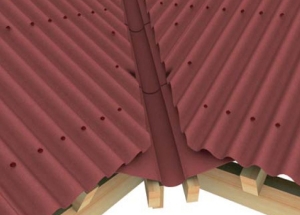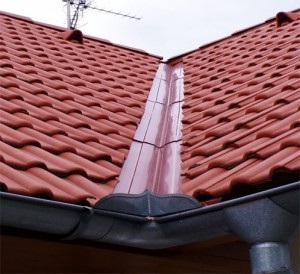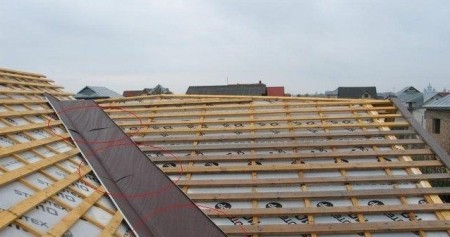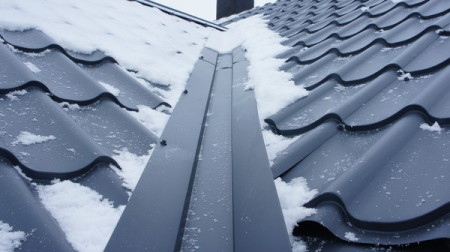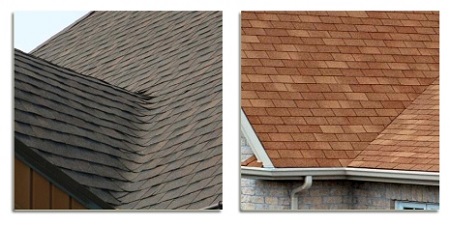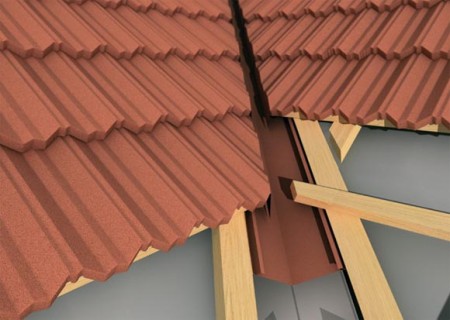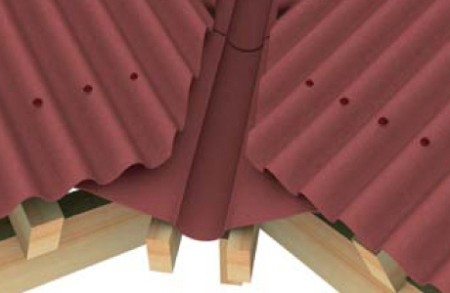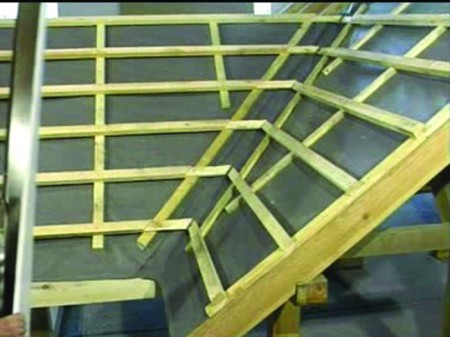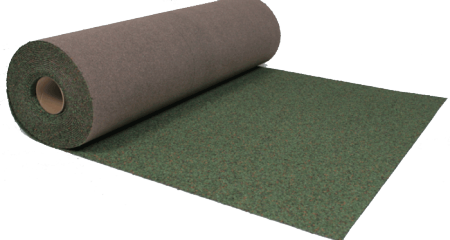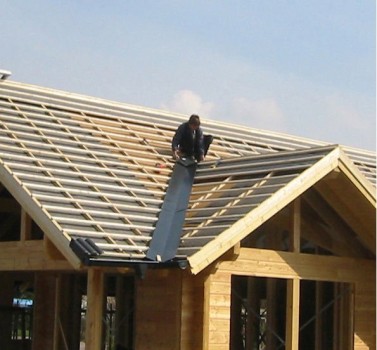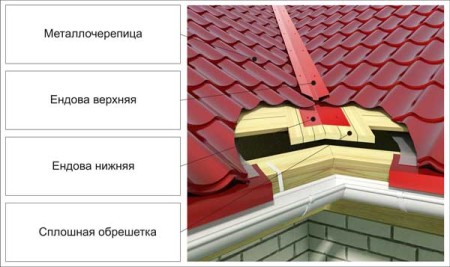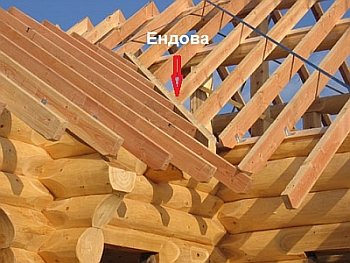The roof is a kind of "crown", one of the most important functional elements of any house or building. Therefore, the installation of roofs and roofs has always tried to perform as carefully as possible and approached this issue in all seriousness. Moreover, the roof is rightly considered to be one of the most complex elements of the house, therefore, it is not worth to economize on the services of specialists and good, quality materials. If you believe the authoritative domestic architects and designers, then one of the most reliable, aesthetic and functional types of roofs is the roof rafter system with the endow. We will take our word for it, and we will try to consider this issue in more detail. What is endowa - know almost everything, at least, have seen. And what is its role, what are the valleys, how to properly mount the valley - we read below.
Content
What is the land
The rafters system from the endowment solves many functional problems, and serves as a real decoration of the facade of the house, giving it an aesthetic appearance. The valley itself does not stand out especially against the roof, but if it has rust traces, bumps and irregularities, it will significantly spoil the overall impression even from the most beautiful roof. But on the other hand, the valley is able to emphasize some element of the roof, to distinguish it.
So, it is customary to call the place where the joint of two roof slopes, which form the inner corner, is located. Naturally, in this angle during the precipitation flows streams of water, carrying a garbage. The objective of the valley is to collect water and draw it to the drainage system. Simply put, the valley performs the function of a waste gutter. Endow is done on a mandatory basis on the roofs of buildings, which are arranged with the letter "T" or "G" or in the places where the roof slope protrudes. Most often, the valley of the valley is made of galvanized steel sheets, which significantly extends the life of the roof.
The construction of the valley includes several bars that perform different functions:
The bottom end is the main element of the structure, it is installed on the joints of the rafters, forming a negative angle. It is the lower end, made of reliable galvanized steel, that protects against getting into the roof of the water.
Endova top - performs, mainly, an artistic and aesthetic function, and, in fact, serves as an ornament, covering the lower valley, which has an unattractive appearance.
Types of grades
According to the type of joints of the roof slopes, there are several types of valleys:
- Twisted.
- Closed.
- Open.
When installing an open valley, all the details of the roof slopes are joined end to end, to effectively drain sediments. When the open valley type is installed, a strip of corrugated roll roof of the required width is laid, on average 45 centimeters. Carpet valleys are firmly pressed and fastened with nails, observing an interval of about 2.5 centimeters. On both sides of the strip a layer of cement mortar is applied (cement grade 400). The thickness of the layer should not be less than 1.5 mm. On top of the steljut another strip of the roll roof, which is also cemented mortar.
If the slopes of the roof are located at a steep angle, then for a uniform and effective drainage of sediments, a closed valley is arranged. As in the previous version, the corrugated ribbon is laid out. Its width should be about 90 centimeters. The tile is installed along the entire ramp.
The essence of the construction of the interlaced valley is that all the details of the rafter structure are interconnected. The interlaced valley is covered with roofing material. Several tile lines can be intertwined with each other and mounted through a valley. Usually the installation of a valley does not require much effort and time, especially when it comes to a simple roof construction.
The construction of the roof with a valley is characterized by good stability and safety during heavy rain and snowfall. Snow, before it turns into ice, along with the rain, evenly leaves in the gutter of the valley and drains from the roof. The roof with endowment is durable and has an aesthetic appearance.
Mounting valley. Necessary materials
For the installation of the valley, the following materials will be needed:
- Brackets for fastening the groove.
- Self-adhesive strip for waterproofing. The strip must have a foam rubber backing designed to protect it from moisture and debris.
- Half tile.
- Tape for sealing joints.
Under the valley it is necessary to make a crate beforehand.
The curb is made frontally from both roof slopes. Between the slats of the battens, you can make small gaps, or make it solid. For example, if you mount an endole ondulin, then the crate is best made solid, since ondulin is a rather soft material, a reliable base is needed.
Further on the entire length of the gutter waterproofing, which will prevent the penetration of moisture. Quite often, especially if the roof slope is flat, it is necessary to install several layers of waterproofing. If this is neglected, then the roof top can leak, which is fraught with serious waste, since it will be necessary to disassemble and repair not only the valley, but also part of the roof.
As a waterproofing material, it is recommended to use a so-called shallow carpet completely impregnated with bitumen.
The end part of the valley carpet has a covering of fine basalt crumbs, the back part is covered with sandy dust.
This material has excellent waterproofing characteristics and is quite long. Endovy carpet fastens most often nails with a wide hat, clogging them with an interval of 20 centimeters, sometimes for fixing use special stickers. After the waterproofing material is fixed, the bottom of the valley is set.
When installing the bottom valley, the main thing is to firmly attach the material to the crate. The metal plate is attached with self-tapping screws every 30 centimeters. If the valley valley consists of several plates, then the next one is slipped under the previous one, in order to obtain an overlap of not less than 8-10 centimeters. Joints for increasing waterproofing are desirable to be treated with a sealant. The metal trough should rise from the bottom of the inner corner by at least 10 centimeters, or better - by 20-30 centimeters. The upper part of the valley is mounted as well as the bottom, laying plates with an overlap of 8-10 centimeters.
As you can see, nothing complicated installation of valleys does not represent itself, and provided that the roof is designed correctly, no difficulties should arise.
Roof with a roof: rafter system
The system of rafters with roofing is considered to be one of the most sound and quality, as it has an expanded design that includes a different arrangement of rafters - for example, layered and suspended rafters.
At the planning stage of the building, the most detailed plan for the future roof is prepared, on which all possible contiguities must necessarily be indicated: terraces, verandas, attic windows and dormer windows, etc. In addition, the plan should indicate all the main, as well as additional runs, you can see the rafters that form the valley. It is in this place that diagonal rafters are installed. The roof with a valley can be T-shaped, L-shaped or cross-shaped. It goes without saying that the more complex the roof construction, the more time and money it takes to build it.
Endowa is one of the most complex knots of the roof truss frame. Most often under the roof are a special rafter frame, which is based on the run and the top of the joints of the skate beams. In order to prevent mechanical damage to the bottom valley, during the installation work, special attention should be paid to the places where the chute is fastened. Nails for fixing are undesirable, for this purpose roofing screws are best suited.
In the process of editing the trends, you need to follow a few simple but important recommendations:
- In the process of the valley plant, care should be taken to ensure that the sealing tape is correctly installed over the entire length of the joint. This is necessary to prevent water and debris from entering the joint.
- Under the valley it is necessary to make a crate.
- Ends cut in the chapel, the valley should start from the eaves, not higher.
- Before starting the installation, prepare in advance the required number of rails for the valley. They are mounted from the bottom up, while overlapping the required dimensions is observed.
- Mounting the strips must be done along the flanges.
- The roofing material, which borders directly on the endow, needs to be cut only by marking.
- Placement of fasteners must be marked in advance. The construction is fixed with the help of roofing screws.
- The roofing surface should be close to the end strip, without gaps.
- Screws screw in at a distance from the axis of the valley no less than 25 centimeters
- To smooth the cut edges of the material, it is advisable to use a rubber hammer.
- The details of the upper valley are lapped 10 centimeters ..
Several features of roofs with end
So, the rafter system of a roof with a roof can be made any, it is necessary only to take into account the inclination of the skates. To ensure that the roof has turned out to be reliable and durable, it is necessary to clearly represent its design in advance, and also to choose the correct design for a particular building.
The choice of building material for the roof should be approached as seriously as possible. The roof is exposed to constant loads and aggressive weathering, and the material for its construction must be of good quality, durable and have good anti-corrosion properties. The roof should be free to resist the impacts of a large hail, water and snow.
Work on the installation of roofing material starts from the ridge, from top to bottom, so much easier to measure the required amount of material. After the end of the work, the detached parts of the ridge are strengthened, if any.
To properly calculate the load on the roof rafter system, contact the specialists who will not only help with the calculations, but also plan the correct sequence of work, depending on the type of roofing material and the type of the valley. It will not be superfluous also to recall that any rafter roof system must comply with the SNIP and is made only of quality material.
For the design and construction of the roofing system it is necessary to turn to professionals, since it is unlikely to do everything yourself, and any errors are fraught with very serious consequences. After the roof with the endowment is completely ready, it is recommended to install snow covers. Here, too, it is not recommended to engage in amateur activity, since if the snow holder is not installed correctly, it will not benefit from it, but rather vice versa. Snow holders are attached to the roofing material with the help of self-tapping screws. Their color can be any, but it is desirable to select them according to the color of the roof.


